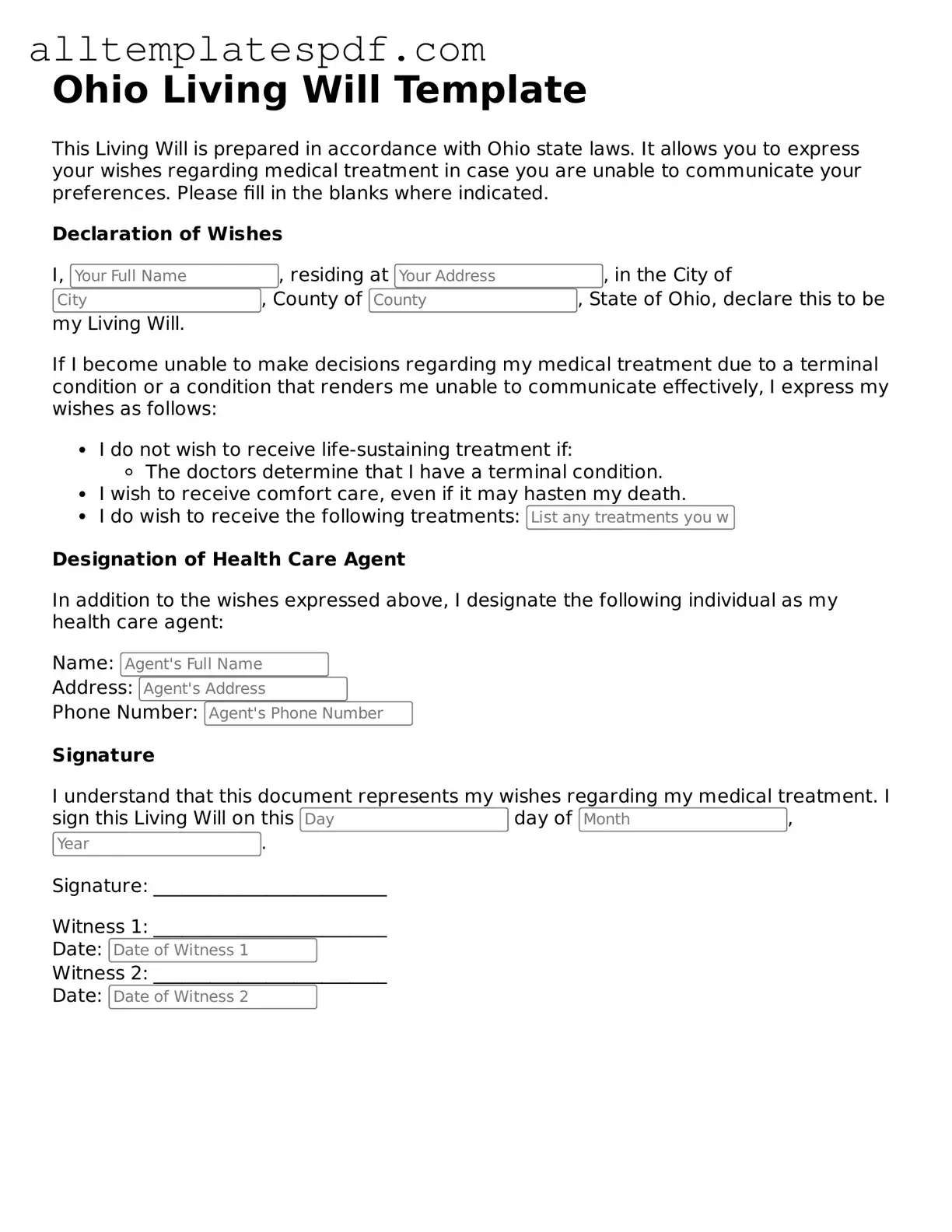When individuals decide to fill out the Ohio Living Will form, they often do so with the best intentions. However, there are several common mistakes that can undermine the effectiveness of this important document. Understanding these pitfalls can help ensure that your wishes regarding medical treatment are clearly articulated and respected.
One frequent error is failing to specify treatment preferences. While the form allows individuals to express their desires about life-sustaining treatments, some people leave these sections vague. It’s crucial to be as specific as possible about what types of medical interventions you would or would not want. This clarity helps healthcare providers make decisions that align with your values.
Another common mistake is not discussing your wishes with family members. Many people fill out the Living Will without having an open conversation with loved ones about their choices. This can lead to confusion and conflict when decisions need to be made. Engaging in these discussions ensures that your family understands your preferences and can advocate on your behalf.
Additionally, individuals often overlook the importance of designating a healthcare proxy. While the Living Will outlines your treatment preferences, it does not appoint someone to make decisions if you are unable to do so. Selecting a trusted person to act as your healthcare agent provides an extra layer of assurance that your wishes will be honored.
Another mistake is not updating the document regularly. Life circumstances change, and so do personal values and beliefs. Failing to review and revise your Living Will periodically can result in outdated preferences that no longer reflect your current wishes. Regular updates help ensure that your document remains relevant and effective.
Some individuals also make the mistake of not signing the form correctly. The Ohio Living Will must be signed and dated in accordance with state requirements. If the signature is missing or the date is not included, the document may not be considered valid. Ensuring that all necessary signatures are in place is essential for the document’s enforceability.
Lastly, people sometimes neglect to store the document properly. After completing the Living Will, it’s important to keep it in a safe yet accessible location. Informing your healthcare proxy and family members where the document is stored can prevent confusion during critical moments when it is needed most.
By being aware of these common mistakes, individuals can take proactive steps to create a Living Will that truly reflects their healthcare wishes. Careful attention to detail and open communication can make a significant difference in ensuring that your preferences are honored in times of need.
